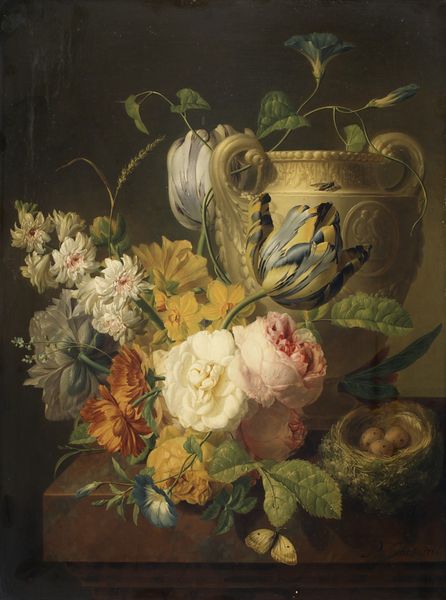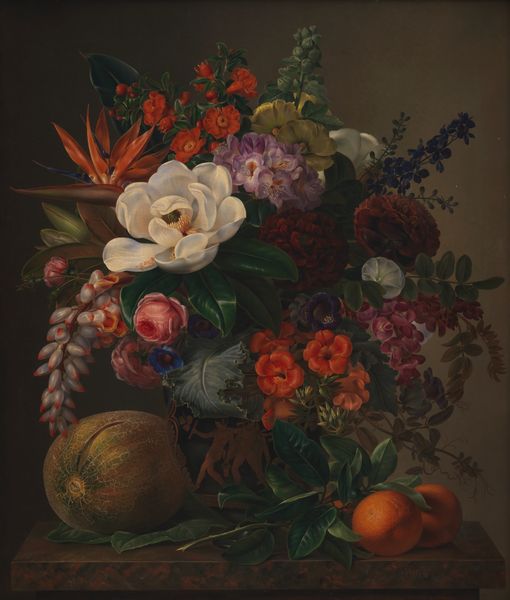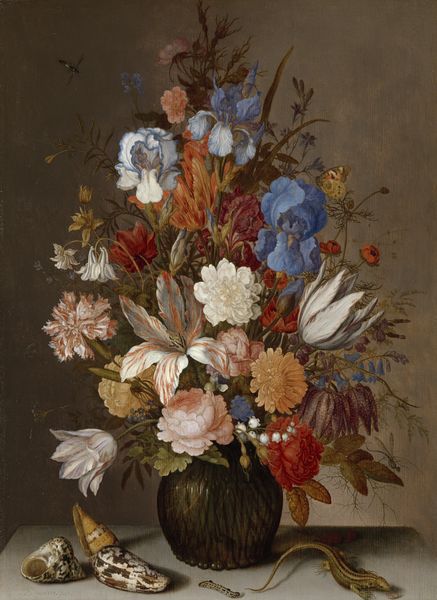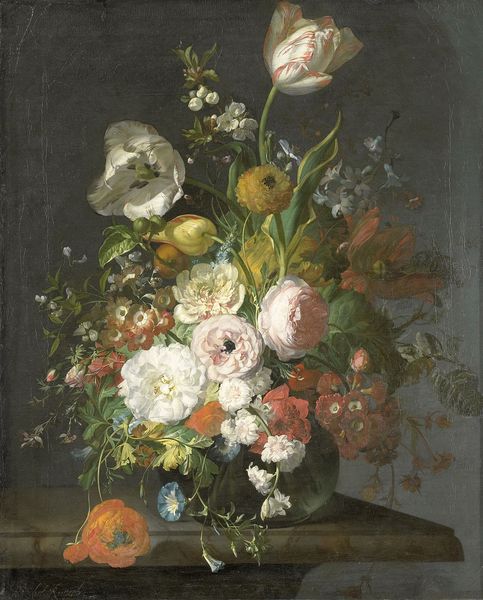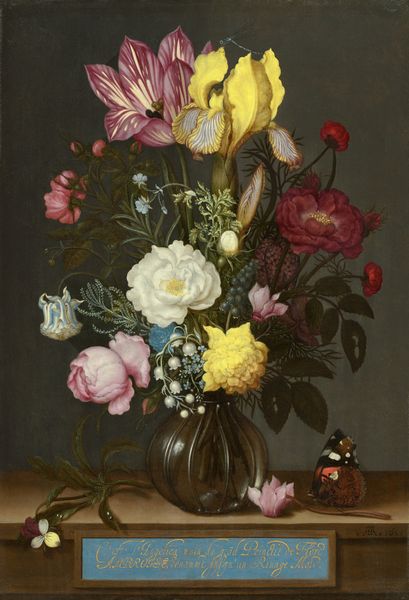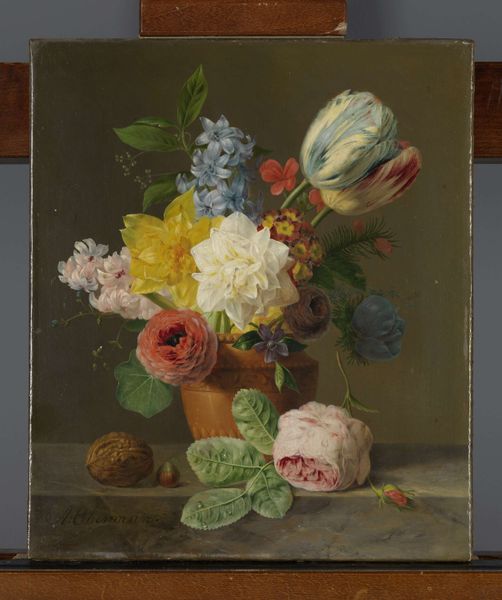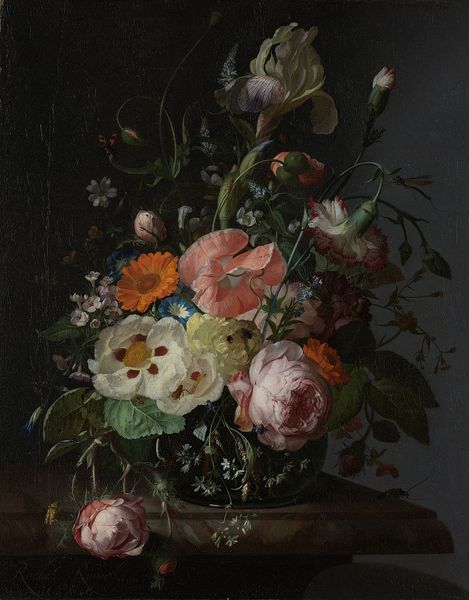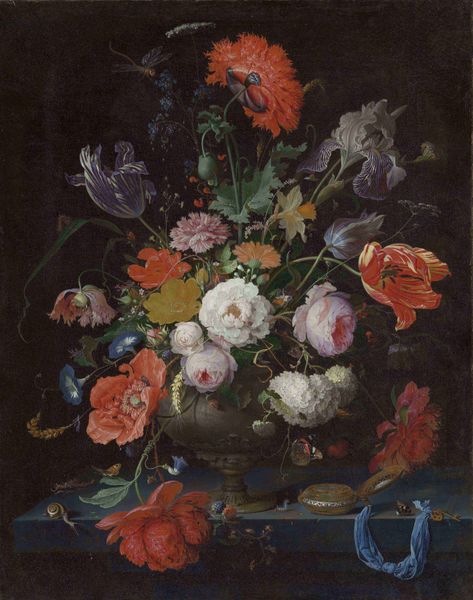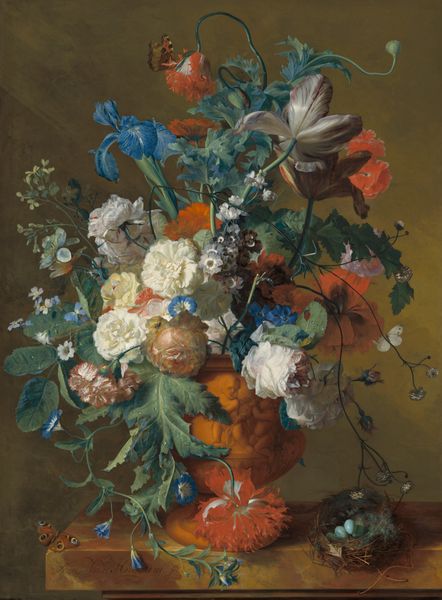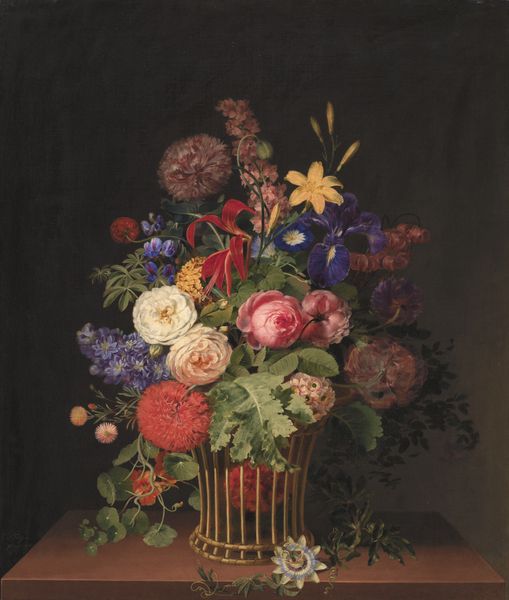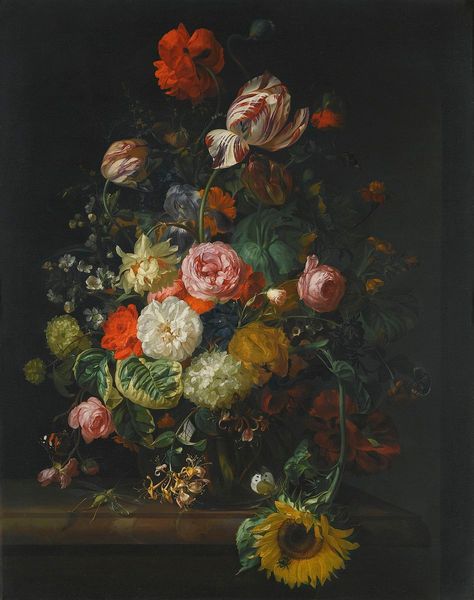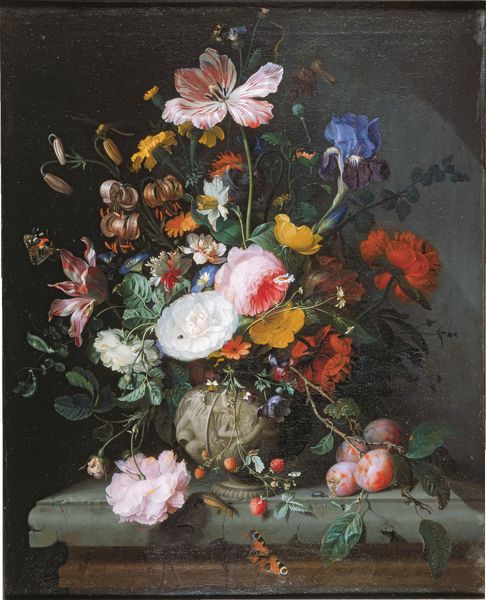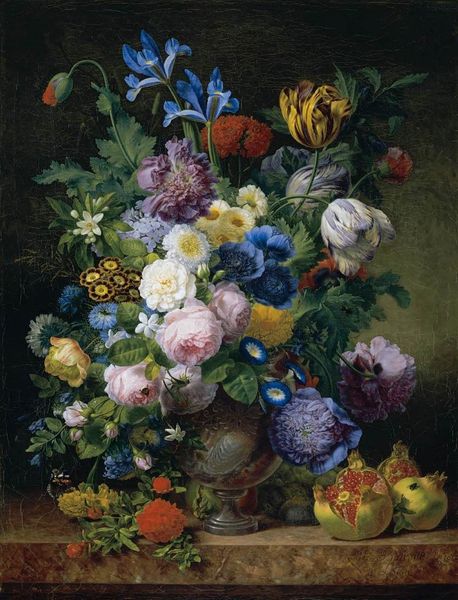
painting, oil-paint
#
painting
#
oil-paint
#
landscape
#
oil painting
#
romanticism
#
realism
Dimensions: overall: 91.44 × 66.04 cm (36 × 26 in.) framed: 108 × 82.6 × 5.7 cm (42 1/2 × 32 1/2 × 2 1/4 in.)
Copyright: National Gallery of Art: CC0 1.0
Editor: Severin Roesen's "Still Life, Flowers, and Fruit," painted in 1848 using oil, is a rather striking work. It has this immediate sense of abundance. What draws my attention the most are the small bird eggs resting next to roses. How do you interpret this work? Curator: Indeed, that detail strikes at the heart of Roesen’s symbolic vocabulary. Still lifes, particularly those of the Romantic era, often function as vanitas – meditations on mortality. What symbols do we see here that suggest that theme? Editor: Well, fruit starts to decay quickly, so I’d guess it’s linked to decay and the fleeting nature of life? And perhaps that is a butterfly down below too... a reference to metamorphosis? Curator: Precisely! But then, observe the nest with eggs. That’s not just about mortality; it's about the enduring cycle of life, a powerful counterpoint to the wilting flowers. Even the tightly arranged bouquet, almost overflowing, hints at controlled vitality. Think about the visual weight of that nest versus the weight of the fruit; can one suggest one is longer lasting, despite the beauty of both? Editor: So, Roesen isn't simply reminding us of death, but suggesting that life, like art, persists through cycles of beauty, decay, and rebirth. Is this a common reading for works like these? Curator: Often, yes, though Roesen presents it with a particularly vibrant exuberance. Notice the jewel-toned palette and meticulous detail – a celebration of life interwoven with the awareness of its ephemerality. Look closer, and you might also identify specific flowers, each carrying its own symbolic baggage drawn from art history or mythology. Editor: That adds another layer. I never really considered how much symbolism could be packed into what seemed like just pretty things! Curator: It’s a dialogue across time. And it changes our modern appreciation.
Comments
No comments
Be the first to comment and join the conversation on the ultimate creative platform.
